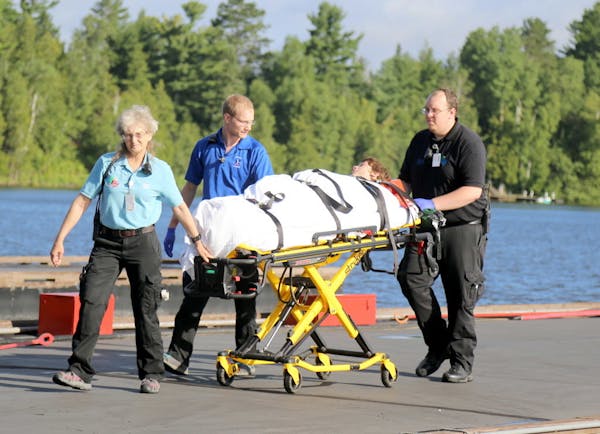When hot, humid air arrived in southern Minnesota on Tuesday night, the National Weather Service was expecting copious rain across the area and issued a flash flood watch. But many towns saw nary a drop.
Yet on Thursday, when similar conditions developed over northeastern Minnesota as the juicy air moved in, violent thunderstorms with damaging winds bubbled up. Why did northern Minnesota get hit so hard, while southern Minnesota got off scot-free?
Turns out the upper atmosphere in southern Minnesota was just too warm, said Michelle Margraf, a meteorologist with the National Weather Service in Chanhassen.
"They call it a cap," Margraf said. "Thunderstorms develop when hot air rises and then cools as it rises. The air over us [Tuesday] was too warm in the midlevel of the atmosphere, and that didn't allow the air to rise to the colder air aloft."
But in Duluth, that did happen. Fast-moving high-level winds from the west and low-level winds blowing in juicy air from the south collided over Duluth and northeastern Minnesota and pulled the warm air up. When it met the cooler air aloft, rain formed and pulled the strong winds to the ground, Margraf said.
"It became a bow echo, which is when one part of the storm will push out farther and faster to the east, and that's an indication of very strong winds," said Carol Christenson, term warning coordinator and meteorologist at the National Weather Service in Duluth. "With juicy air and lots of heat and moisture in place, it was the perfect setup for an intense thunderstorm."
Recent heavy rain in the northeastern part of the state had left the soil saturated, another factor contributing to the high number of trees that went down. Tree damage can occur when winds hit 60 miles per hour, and the strongest gusts, reported by a ship in the Lake Superior harbor, were clocked at 72 miles per hour.
Tall trees with a full canopy were extremely vulnerable to the wind and waterlogged ground, which explains why many mature trees, including one 90 feet tall, went down during the predawn storm, Christenson said. The result was "a huge swath of damage from north to south — with soggy soil, it doesn't take much wind to topple trees."
Tim Harlow • 612-673-7768

University of Minnesota police arrest 9 after pro-Palestinian encampment set up on campus
2 dead in Lino Lakes, no known threat to public, police say
Teen charged with murder in deadly St. Paul shooting last month

